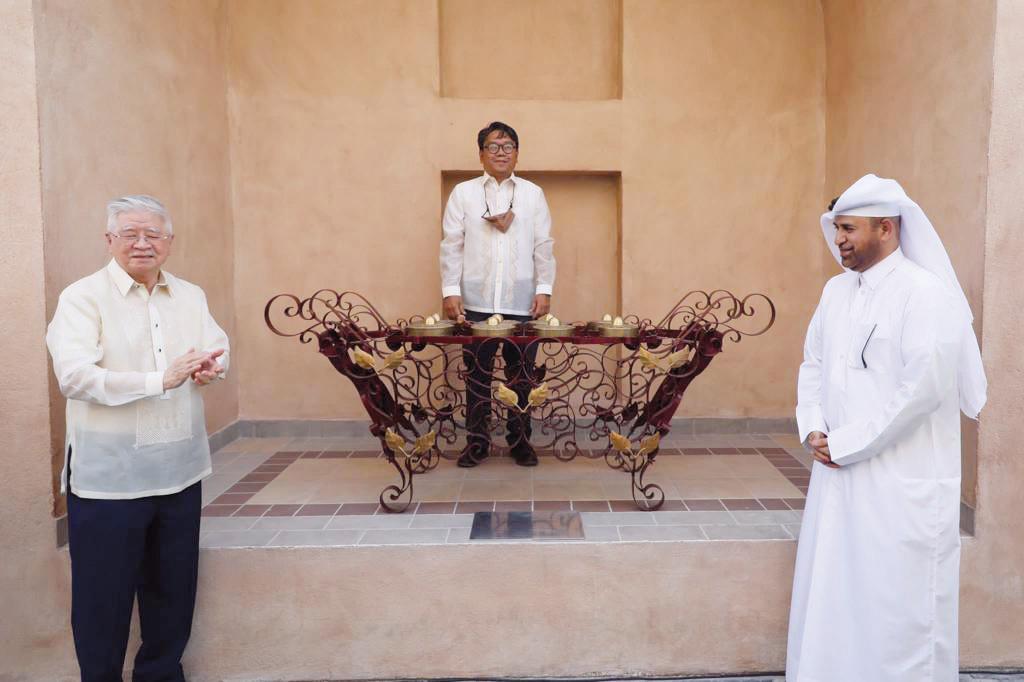
Philippine Corner At Katara Features 'Kulintang'
Doha: The Cultural Village Foundation (Katara) and the Philippine Embassy in Qatar inaugurated yesterday the Philippine corner at Katara featuring an indigenous musical instrument“Kulintang” by Filipino artist Frederick Epistola.
Katara General Manager, Dr. Khalid bin Ibrahim Al Sulaiti said the launch opens a window towards another world of beauty and creativity.“It provides the opportunity for visitors to contemplate this creativity and contribute in various ways to elevate public taste and open new horizons towards fun and art, a way to achieve our vision and cultural goals.”
The inauguration was led by Dr. Al Sulaiti, along with Philippine Ambassador, H E Alan Timbayan, the artist Frederick Epistola, and other officials.
Speaking to The Peninsula, artist Epistola said he hopes the“Kulintang” will serve as a reminder to the rich and indigenous culture of the Philippines.“I created my own contemporary interpretation based on the Kulintang tradition. It is a symbol of a Filipino celebration which is part of our healing ritual, and it symbolises for me the cultural, and diplomatic relations of the Philippines to Qatar.”
“The culture should be the foundation of everything to know our identity as people, part of that is our rich historical past and tradition,” he said when asked why it's important to highlight the culture of the past.
Moreover he encouraged fellow Filipinos living in Qatar to visit the exhibition in order to revisit the symbol of the Philippine cultural heritage in Katara.
This is not the first time Epistola exhibited in Katara. B ack in 2019, he held his first solo exhibition entitled“Shapes and Hues,” making him the first Filipino to hold an exhibition at the cultural village. He is a painter, collage artist, sculptor, and documentary filmmaker.
The Kulintang is characterised by tightly controlled rhythmic patterns achieved through the combination of a repeating bass rhythm, while a spontaneous improvisation is played. The instrument consists of a row of small brass or bronze gong kettles horizontally laid upon a rack that functions as a resonator. It is played by striking the bosses of the gongs with two soft wooden beaters. When used as part of an ensemble, the kulintang is the main melody instrument.
Kulintang music is played during large feasts and harvest gatherings, and is preserved for over 1,700 years by the indigenous communities in Southern Philippines.

Legal Disclaimer:
MENAFN provides the
information “as is” without warranty of any kind. We do not accept
any responsibility or liability for the accuracy, content, images,
videos, licenses, completeness, legality, or reliability of the information
contained in this article. If you have any complaints or copyright
issues related to this article, kindly contact the provider above.

















Comments
No comment